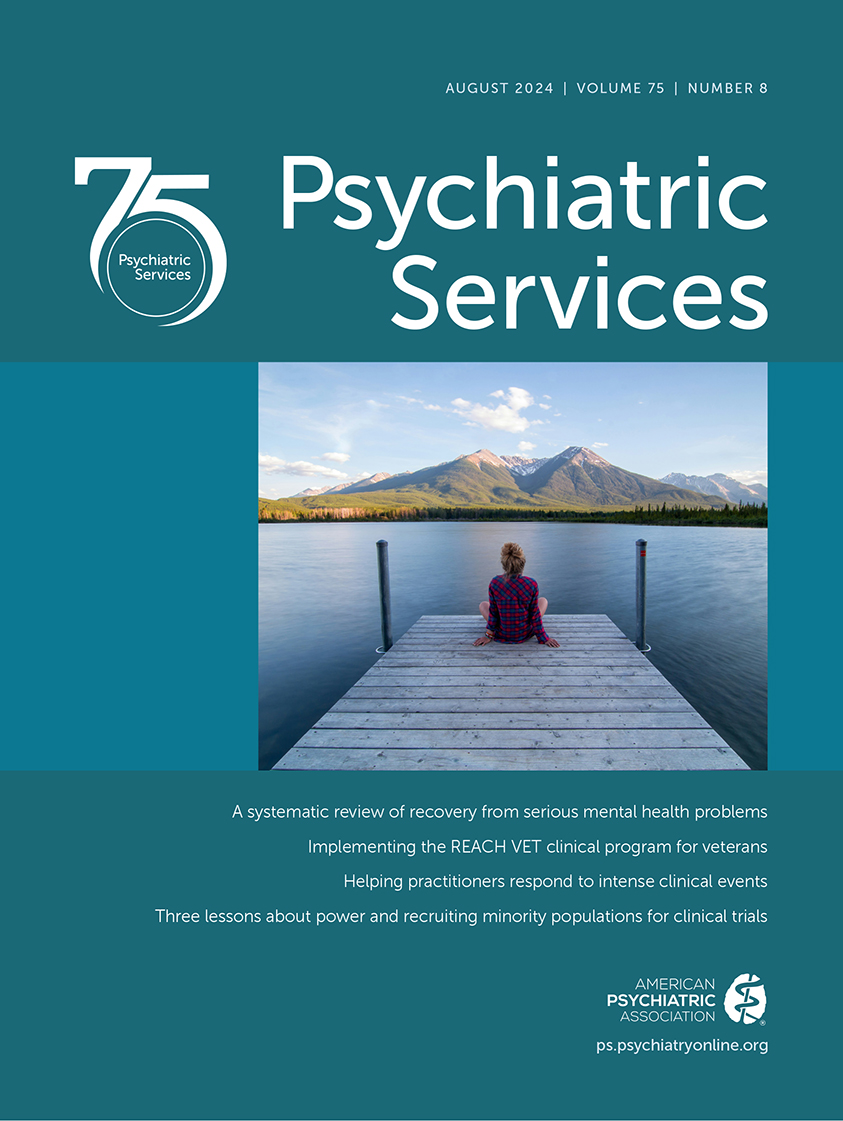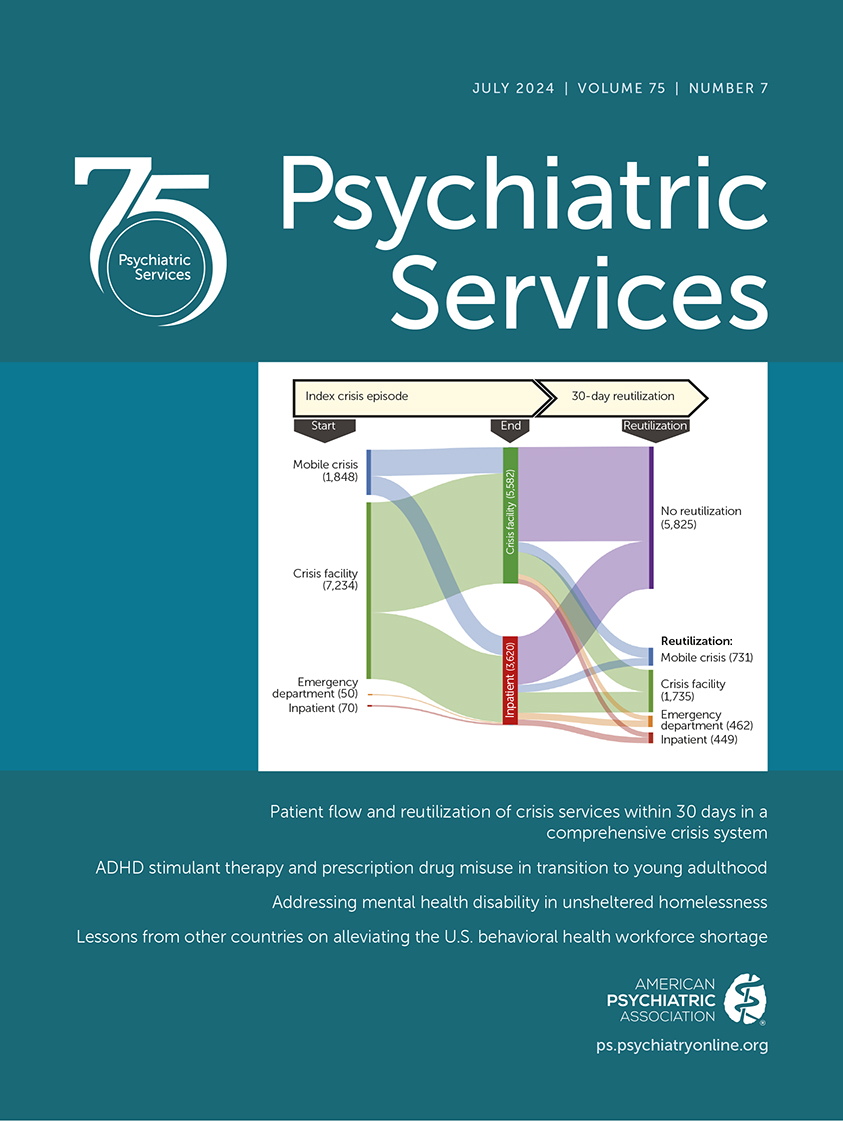Psychiatric Services
- Volume 25
- Number 12
- December 1974
Article
Publication date: 01 December 1974
Pages785–788The author suggests that family therapy is one of the most important channels of primary care in preventive psychiatry. In recent years its growth has been impressive, reaching into every area of clinical practice. Although problems exist in the field (...
https://doi.org/10.1176/ps.25.12.785Publication date: 01 December 1974
Pages789–791Staff training programs in family therapy techniques are conducted one day a week for a period of five months at mental health centers throughout Pennsylvania. Since February 1972 approximately 150 mental health professionals at 35 centers have ...
https://doi.org/10.1176/ps.25.12.789Publication date: 01 December 1974
Pages792–794The short-term diagnostic and treatment unit at C. F. Menninger Memorial Hospital emphasizes maximum involvement of the family in the treatment process. Family members are required to accompany the patient to the preadmission interview and remain ...
https://doi.org/10.1176/ps.25.12.792Publication date: 01 December 1974
Pages795–798A large percentage of the author's caseload at a rural mental health center in New Hampshire is made up of couples seeking help with marital problems. The author's approach has been to see the partners individually and together for a total of three ...
https://doi.org/10.1176/ps.25.12.795Publication date: 01 December 1974
Pages799–800Because concise and effective techniques for the first interview of conjoint therapy are rarely discussed in the literature, the authors have outlined a method of procedure they have found useful. The techniques include discussing the early months of ...
https://doi.org/10.1176/ps.25.12.799Publication date: 01 December 1974
Pages801–803As part of its rehabilitation program, the Veterans Administration Hospital in Tuscaloosa, Alabama, uses reality orientation with confused and disoriented patients. The authors describe reality-orientation techniques and assess the results of the program ...
https://doi.org/10.1176/ps.25.12.801Publication date: 01 December 1974
Pages804–806After distinguishing between clinical follow-up and monitoring, or evaluative, follow-up, the authors describe some of the characteristics of an adequate monitoring system. They believe that most communityoriented residential programs can provide at least ...
https://doi.org/10.1176/ps.25.12.804Publication date: 01 December 1974
Pages807–808Editor's note: The following article grew out of Miss L. E. Lillis's experiences with her sister, who was first hospitalized for mental illness in 1969. When the account was written, the sister was still a halfway house patient in a Western state, but was ...
https://doi.org/10.1176/ps.25.12.807Publication date: 01 December 1974
Page809The paper entitled "Four Stages of Institutional Development in an Adolescent Psychiatric Hospital" in the October issue states on page 656 that when the Constance Bultman Wilson Center for Education and Psychiatry was established in 1971, about 25 per ...
https://doi.org/10.1176/ps.25.12.809Past Issues
View Issues Archive
Vol. 75 | No. 8

Vol. 75 | No. 7

Vol. 75 | No. 6
